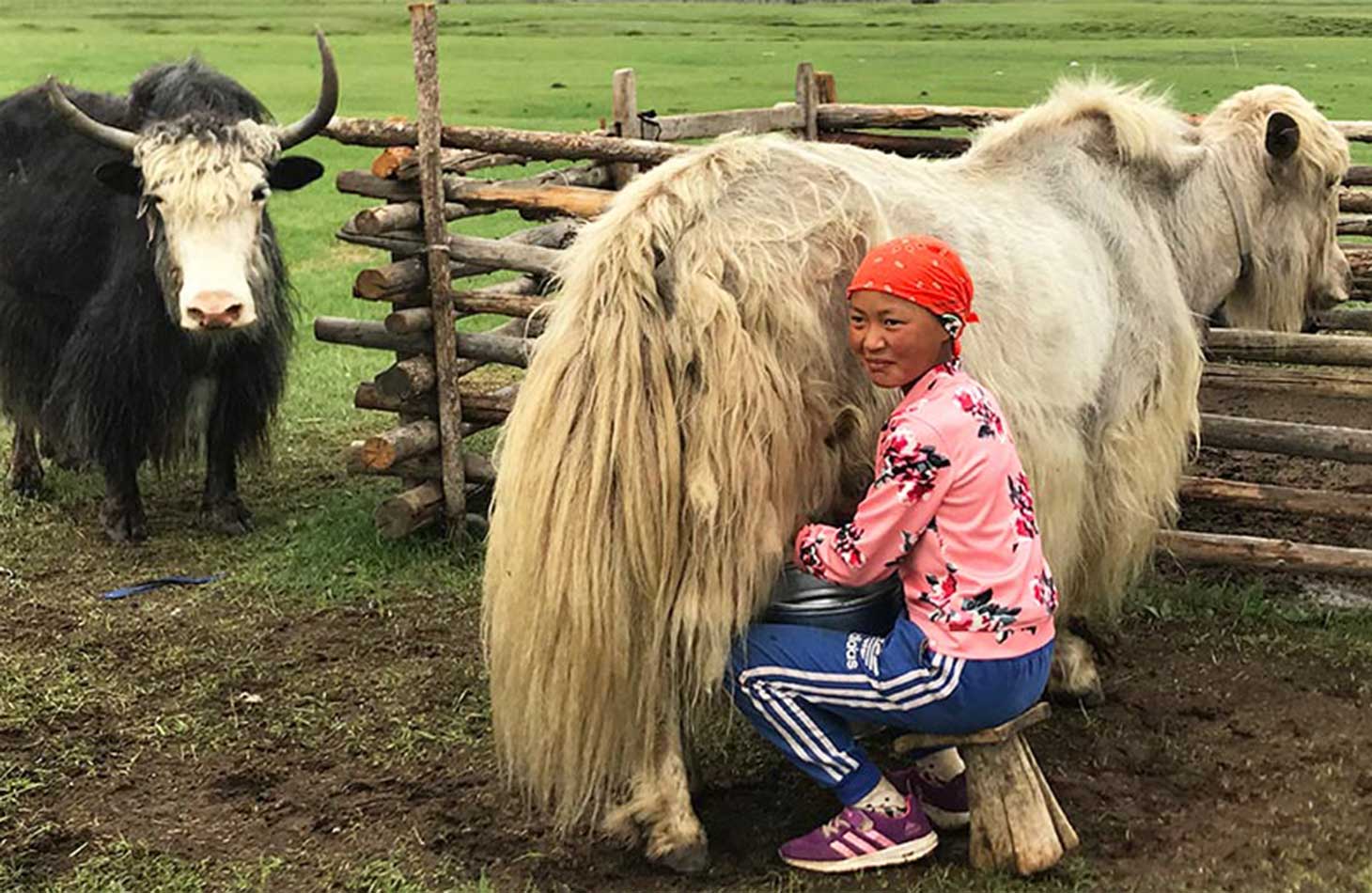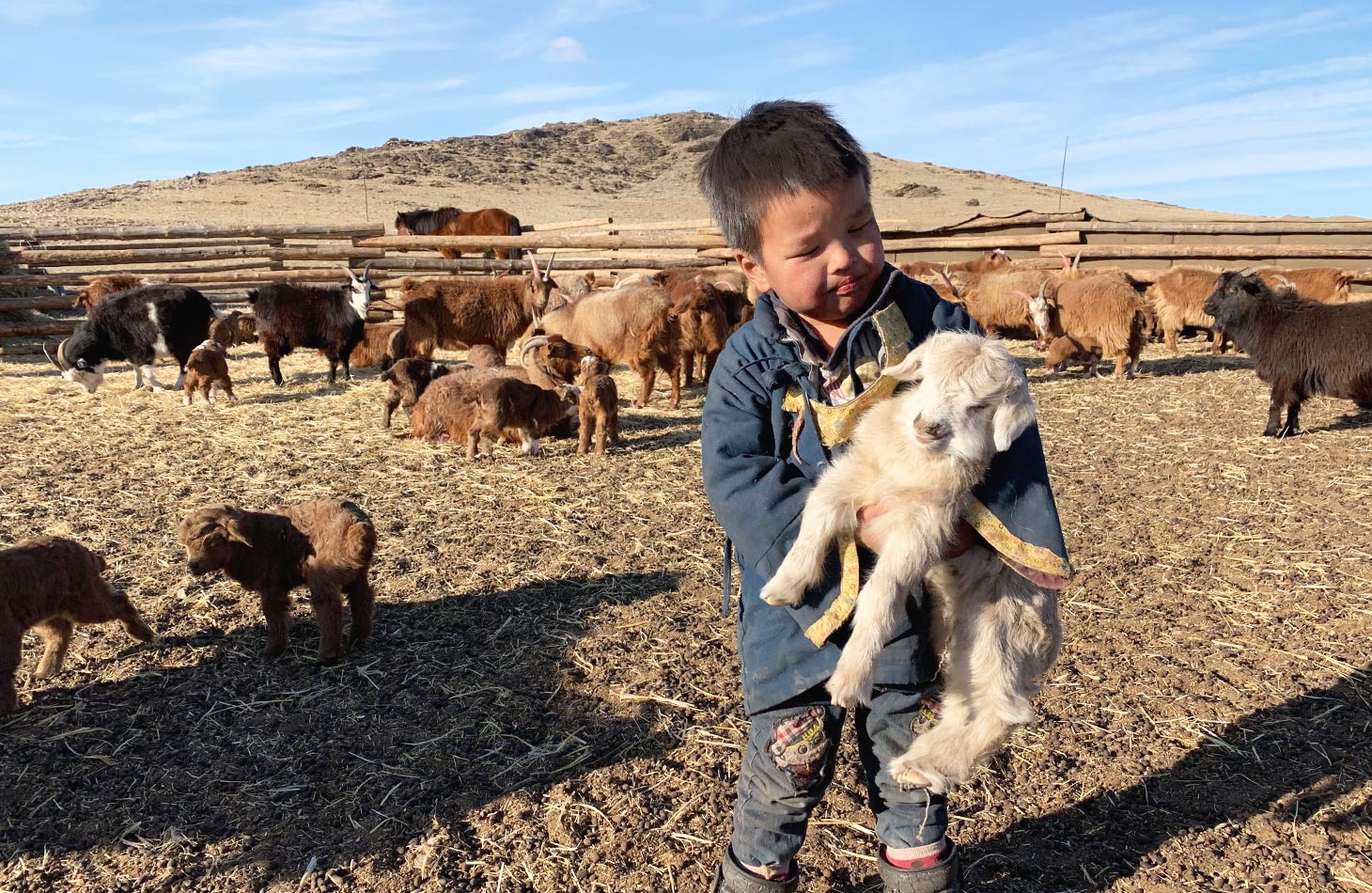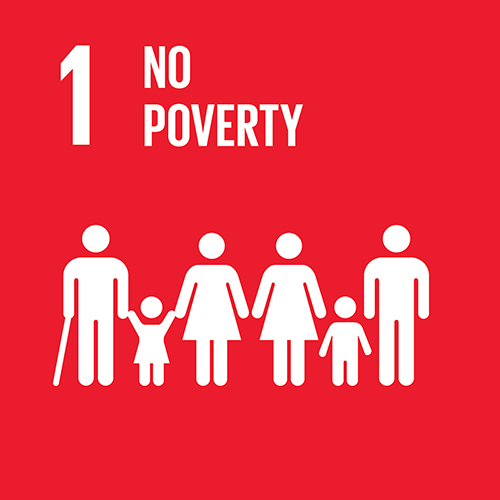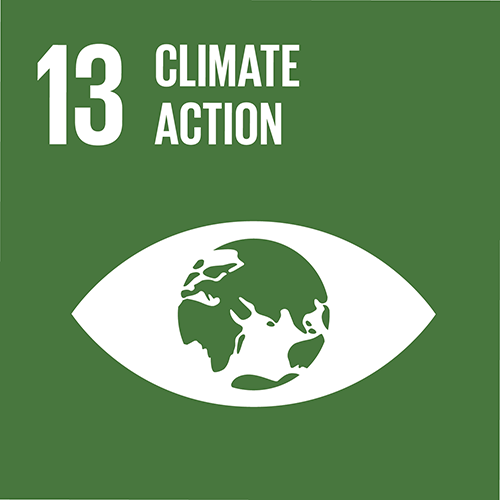Pastoral Nomads take Climate Action in Mongolia
Project type: Land Use and Forestry
Project location: Mongolia Arkhangai Aimag (province), Bayankhonkhor Aimag, Tuv Aimag
Project status: In operation, credits available
Annual emission reduction of the whole project: 24,850 t (2023)
The pioneer project engages Mongolian nomads in the mountains and steppes of a globally important biodiversity heritage. The aim is to enable ecosystem recovery and carbon uptake of rangelands that typically suffer from degradation. Overgrazing, the main cause for degradation will be addressed by improving land and animal herding management practices, protecting key wildlife species and habitats and generating alternative income sources.
The project involves over 100 herder households of three herder groups (Hongor Ovoo heseg, Ikh Am heseg, Dulaan Khairkhan) in the Mongolian mountains, steppes and desert steppes. Generally, the herders are characterized by low income levels and depend on their livestock and natural resources. The groups cover rangelands of around 70'000ha which are typically experiencing degradation. Degradation is driven by overgrazing and caused by four main factors: Firstly, the groups have adopted more sedentary lifestyles and reduced the seasonal mobility in comparison to their ancestors. Secondly, the families tend to keep larger herds that exceed the carrying capacity of the land. Thirdly, pastures close to urban facilities and markets are under particularly high pressure because migrating herders from the whole country gather in these areas. Finally, the herders compete with an increasing number of mines in the region, which consume large amounts of natural resources. Due to these developments - without any intervention - the grasslands are in danger of further degradation.
The community-led initiative aims to sequester carbon, conserve biodiversity as well as to improve herders' livelihoods and well-being. This will be achieved by a set of activities: The herders receive direct payments for ecosystem services (PES) in exchange for actively contributing to carbon sequestration and conserving biodiversity. In this way, herders are incentivized to improve land management and reduce grazing pressure by having fewer livestock and moving more often. In addition, the project encourages herders to strengthen the traditional groups called "Hesegs". This allows to pool resources and skills and to produce and sell finished products instead of raw materials while achieving higher prices. Diversifying livelihoods in that way contributes to improve the herders' well-being. Furthermore, the herders are incentivized to cooperate to protect key wildlife species and habitats such as the Mongolian gazelle, ibex, red deer, marmot and saxaul forests. To support this goal, activities such as licensed logging, planting seedlings and biodiversity surveys will be conducted.
Project and implementation partner of myclimate
The project was set up as a result of a research project by the University of Leicester (UK) and is implemented in collaboration with the Mongolian Society for Range Management. MSRM is a nationally recognised NGO with a substantial track record in implementing community/ herder group projects and programs in Mongolia since 2007. Money from carbon credits is used to pay participating herder groups for their engagement in grassland protection as well as for related activities such as trainings in sustainable rangeland management, tree planting as well as collaborative production and marketing of finished products.
Where exactly does the money from carbon financing go?
Money from carbon credits is used to pay participating herder groups for their engagement in grassland protection as well as for related activities such as trainings in sustainable rangeland management, tree planting as well as collaborative production and marketing of finished products. One of the project’s recent key achievements is the establishment of two “VIVO” trade and service centers (farmers’ market) during the 2022-2023 reporting period. These centers were funded through credit sales and provide herders with opportunities to sell dairy products and livestock meat. The project also fostered small-scale businesses like restaurant, tailoring and sheepskin processing, providing local jobs and boosting household incomes such as helping herders to pay college tuition or medical bills. The project funding from the sales of certificates help herders to conduct activities to improve their pasture such as helping them to cover transportation costs as they move and change their pastures 4-6 times per year to rotate their pasture, to grow green fodder and prepare hay for their winter preparation, and provide funding for wildlife conservation activities such as giving hay and salt for wildlife during harsh winter, protecting saxaul forest and wildlife and planting trees in their area. As livestock is the only source of income for most of the herders, the project funding promotes herders to limit their number of livestock within the pasture carrying capacity.
Monitoring and verification of the project
The project is registered with Plan Vivo, the most rigorous standard for LUF projects. The project implementers visit the project sites 3-4 times a year and have meetings with all herder families to monitor their activities and discuss about their issues and planned activities. The project implementers send an annual report to Plan Vivo each year for approval of the report and issuance of carbon credits. On a yearly base, the project is being monitored and every five years being verified by an independent third party. The first verification of the project was completed in 2022. See “Documentation” for more information below.
This project contributes to 5 SDGs*
*as at the end of 2024. Find out how myclimate reports these SDGs in our FAQ.
The following SDGs are verified by Plan Vivo:
Improved household income from sale of wild fruits and nuts, collaboratively processed milk products, felt production, tailoring, animal skin processing, and farmers’ market for herders to sell their dairy products and meat from their livestock
The nomads are trained in sustainable rangeland management, tree planting and collaborative production and marketing.
Three wells were dug to enhance water supply in under-used pasture areas.
Sequestration of around 24,000 t CO₂/year
Planting of tree seedlings in forest areas and establishment of a tree nursery, protecting forests from illegal tree cutting, forest cleaning (collecting fallen woods and logs), protecting wildlife and providing hay and salt for wildlife during heavy snowfall, protecting saxaul trees in desert area and promoting regeneration of saxaul tree growth
Situation without project
Soil erosion, overgrazing and biodiversity lossDocumentations
Project standard

Project number
7219













